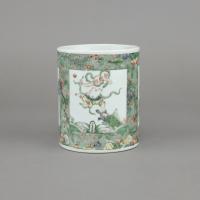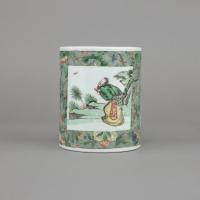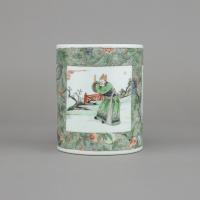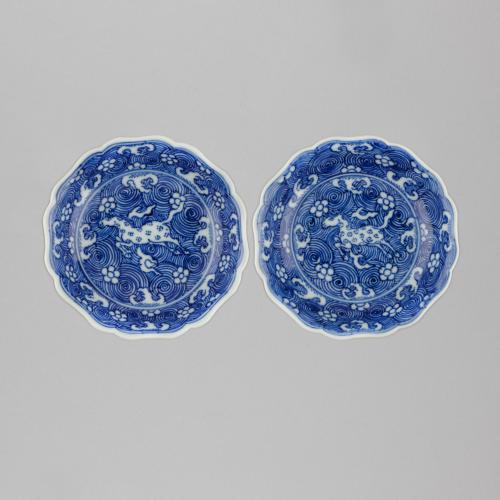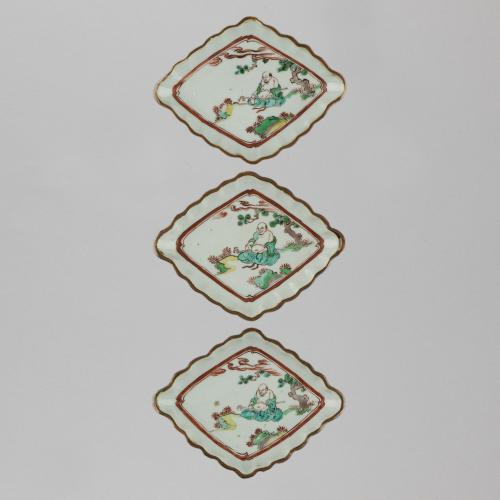
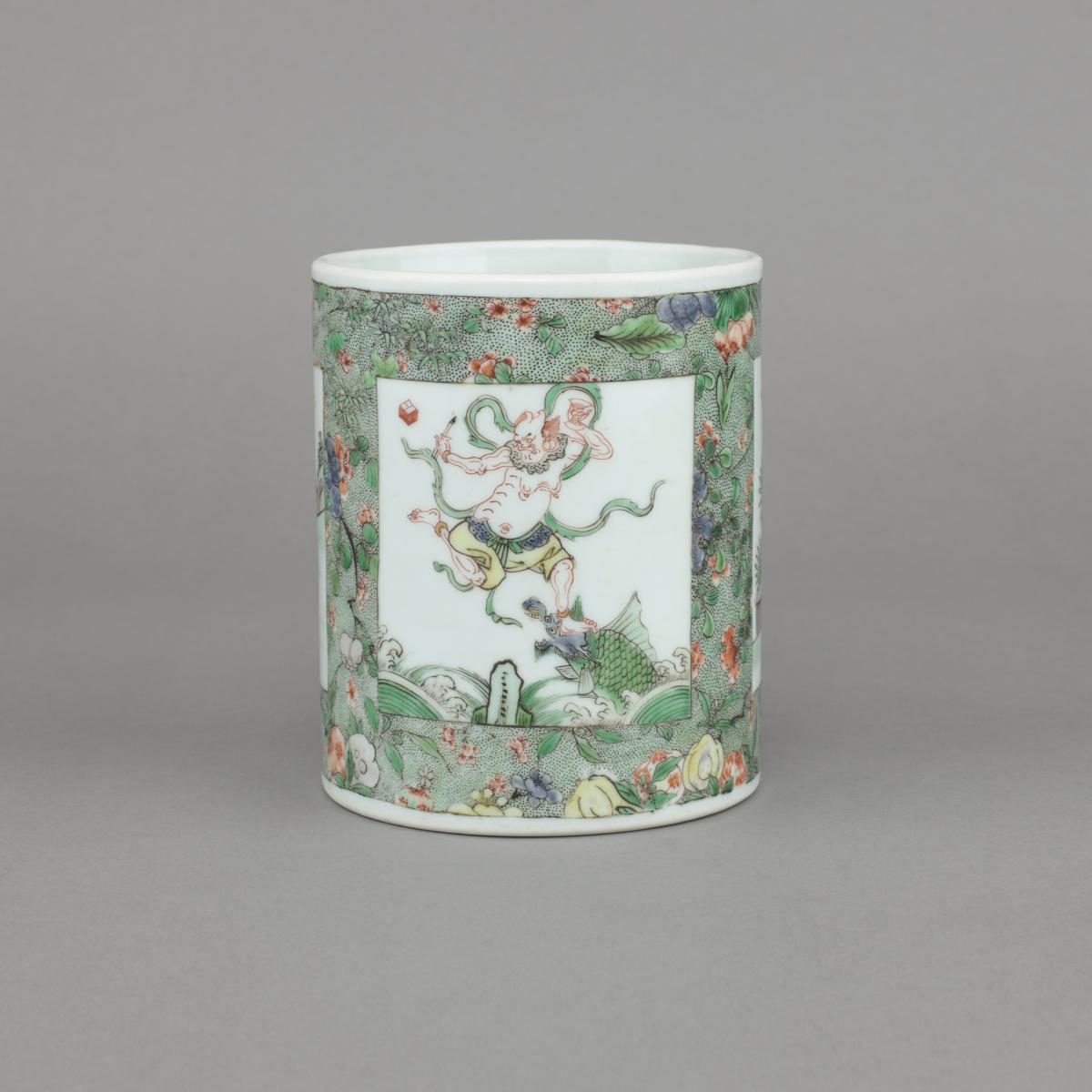
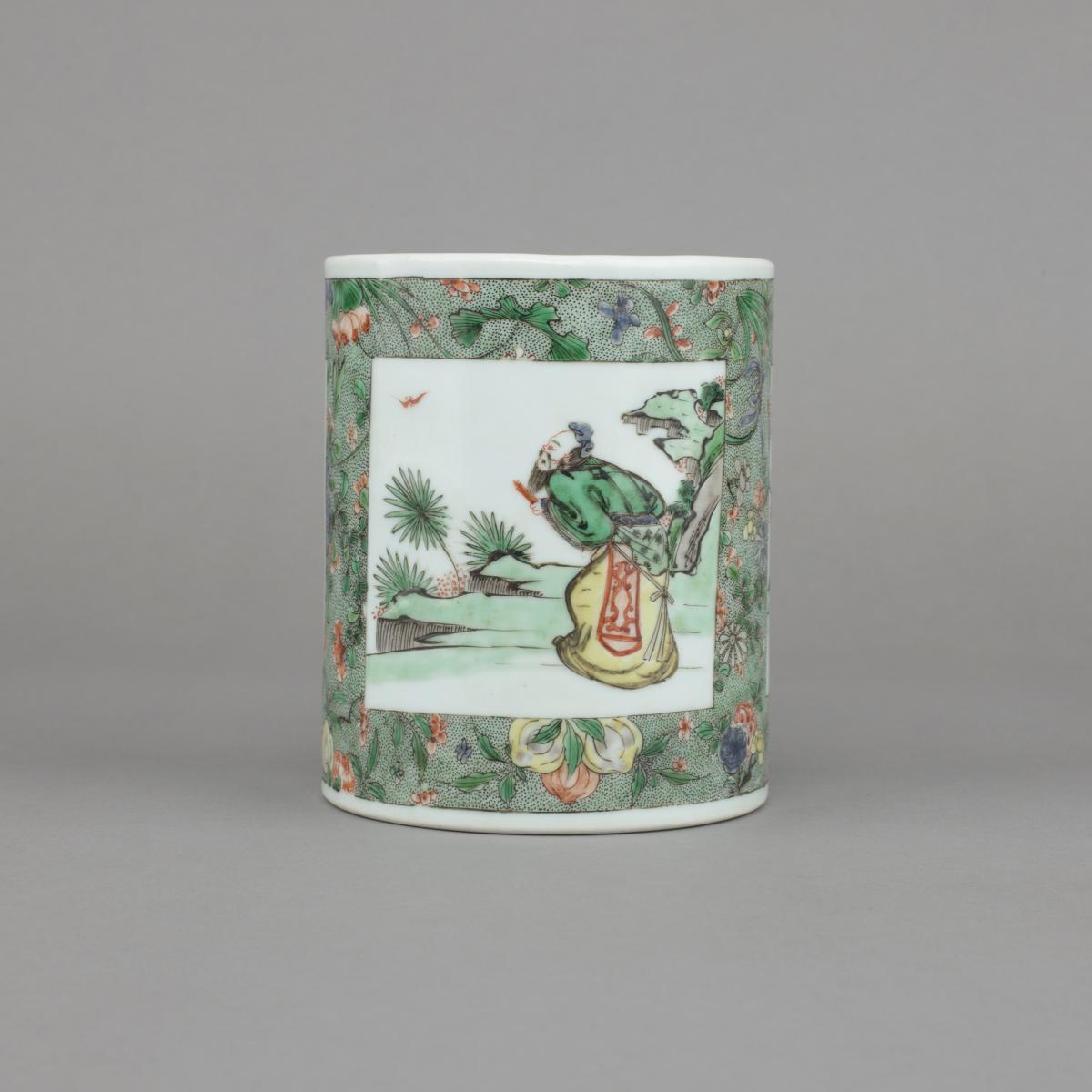
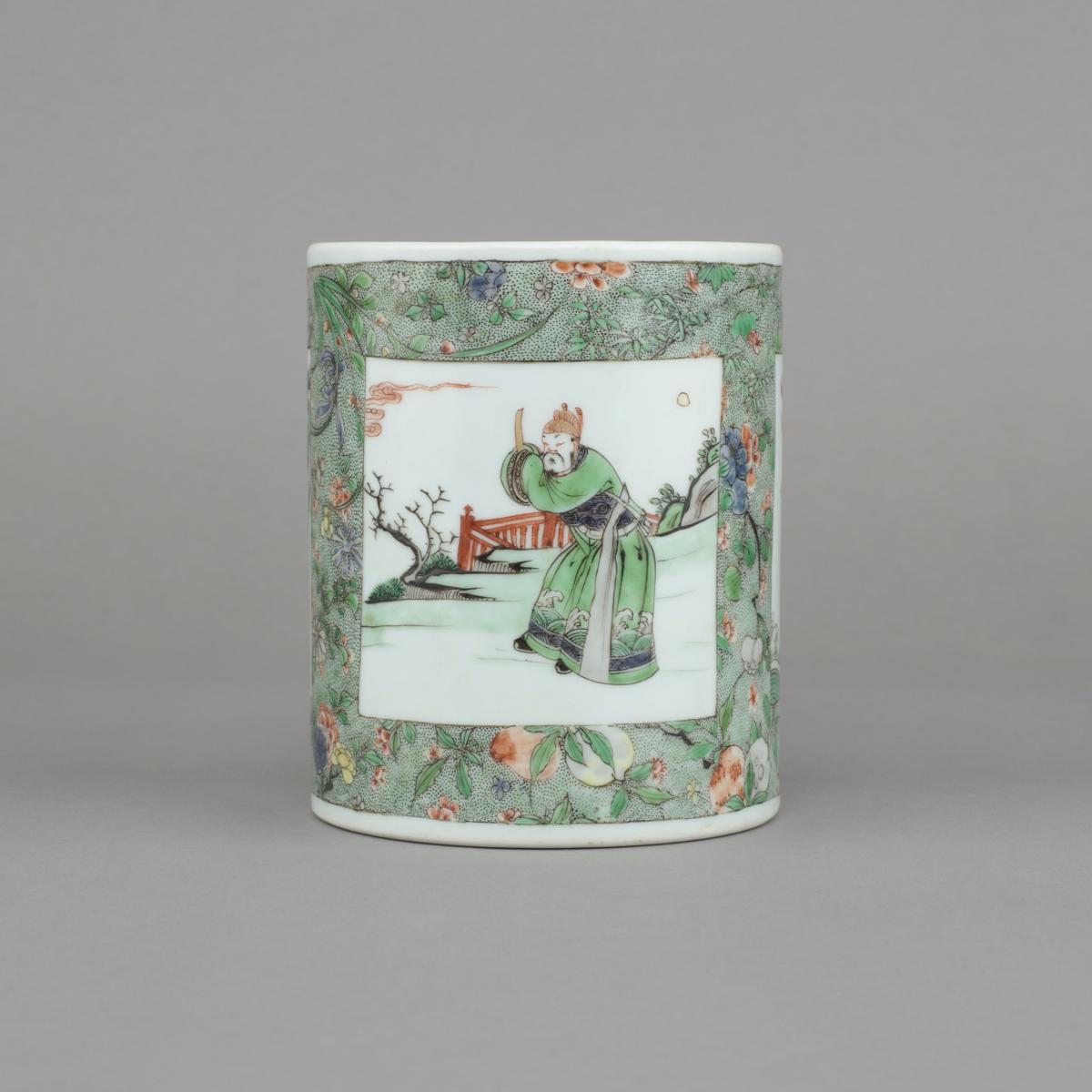
Price
£68000.00This object is eligible for a Certificate of BADA Provenance
The BADA Standard
- Since 1918, BADA has been the leading association for the antiques and fine art trade
- Members are elected for their knowledge, integrity and quality of stock
- Our clients are protected by BADA’s code of conduct
- Our dealers’ membership is reviewed and renewed annually
- Bada.org is a non-profit site: clients deal directly with members and they pay no hidden fees
A Chinese porcelain famille verte, wucai, brush pot, bitong, painted with three panels of Fuxing, the god of happiness, standing on a rocky promontory, holding a scroll and looking up at an iron-red bat in flight, beside overhanging rockwork; Luxing, the god of wealth, standing and holding up a gilt hu-tablet beside fencing and rockwork and beneath cloud scrolls and the sun; Kuixing, the god of examinations, standing on one leg on the head of a dragon fish emerging from crested waves while holding a brush in one hand and a bushel-measure in the other, his scantly clad torso with a large green ribbon and wearing gilt rings on his ankles, beside a small stack of books, all on an elaborate seed green ground with daisies, lotus, morning glory, prunus, hibiscus, tree peony and bamboo sprays above four clusters of ripe peaches, the foot, rim and interior glazed white, the base with unglazed wide band and recessed glazed centre.
5 5/8 inches, 14.4 cm high; 4 5/8 inches, 10.8 cm diameter.
Kangxi, circa 1700.
• From the collection of Dr. Max Wasserman, France.
• The subject matter Fu, Lu, Kui is a most interesting rebus as it literally means blessings, wealth and scholarship. The three star gods Fuxing, Luxing and Shoulao (also known as Shuxing), Fu Lu Shou are more commonly depicted together. On this brush pot, Kuixing also a ‘star god’ replaces Shoulao, therefore, indicating that this piece was probably made for a younger official still rising in rank. Although Kuixing is a servant or acolyte of Wenchang, the god of literature, having xing in his name clearly indicates that he is also a star god.
• A famille verte brush pot painted with Kuixing formerly in the collection of H. M. Knight, in The Municipal Museum, The Hague, gifted in 1969, is illustrated by Christiaan J. A Jörg in Famille Verte, Chinese Porcelain in Green Enamels, Groninger Museum, no. 90, p. 89; another is illustrated by Sam Marsh in Brush Pots, A Collector’s View, the Ashfield Collection, PB 96, pp. 248/9.
• A blue and white rolwagen with Kuixing similarly depicted from a private collection is illustrated by Julia B. Curtis in Chinese Porcelain of the Seventeenth Century, no. 46, pp. 118/9. Where the author notes, “……Kuixing, acolyte of the god of literature, Wenzhang. Kuixing stands on the head of a carp which is turning into a dragon. The carp is the symbol of the scholar because it must pass a series of obstacles to breed at the head of the river, just as the scholar must pass a series of examinations to gain admission to The Imperial Civil Service. After leaping through the Dragon Gate, the most formidable obstacle on the river, the carp becomes a dragon. Kuixing is depicted riding through the waves with a writing brush in his right hand, his bushel-measure in his left, and one leg bent behind him so that he impersonates the character gui”.
Condition report
Overall excellent condition with a few tiny enamel flakes retouched.Stock number
R10015The BADA Standard
- Since 1918, BADA has been the leading association for the antiques and fine art trade
- Members are elected for their knowledge, integrity and quality of stock
- Our clients are protected by BADA’s code of conduct
- Our dealers’ membership is reviewed and renewed annually
- Bada.org is a non-profit site: clients deal directly with members and they pay no hidden fees


